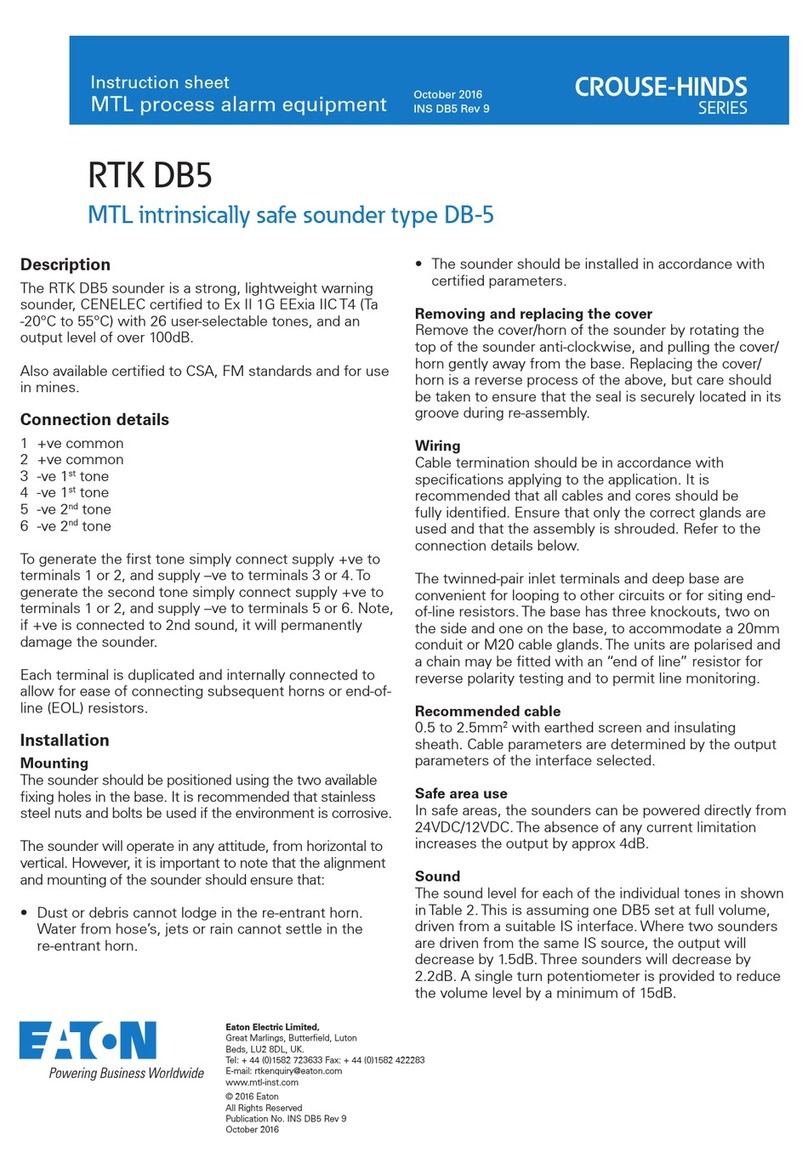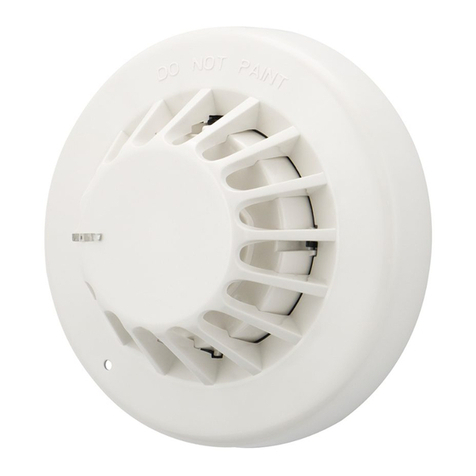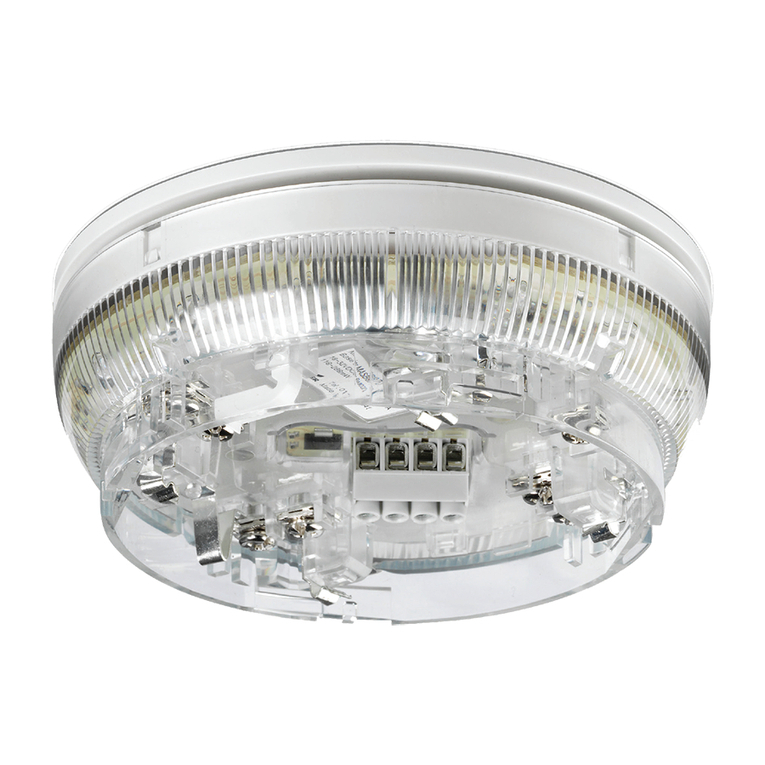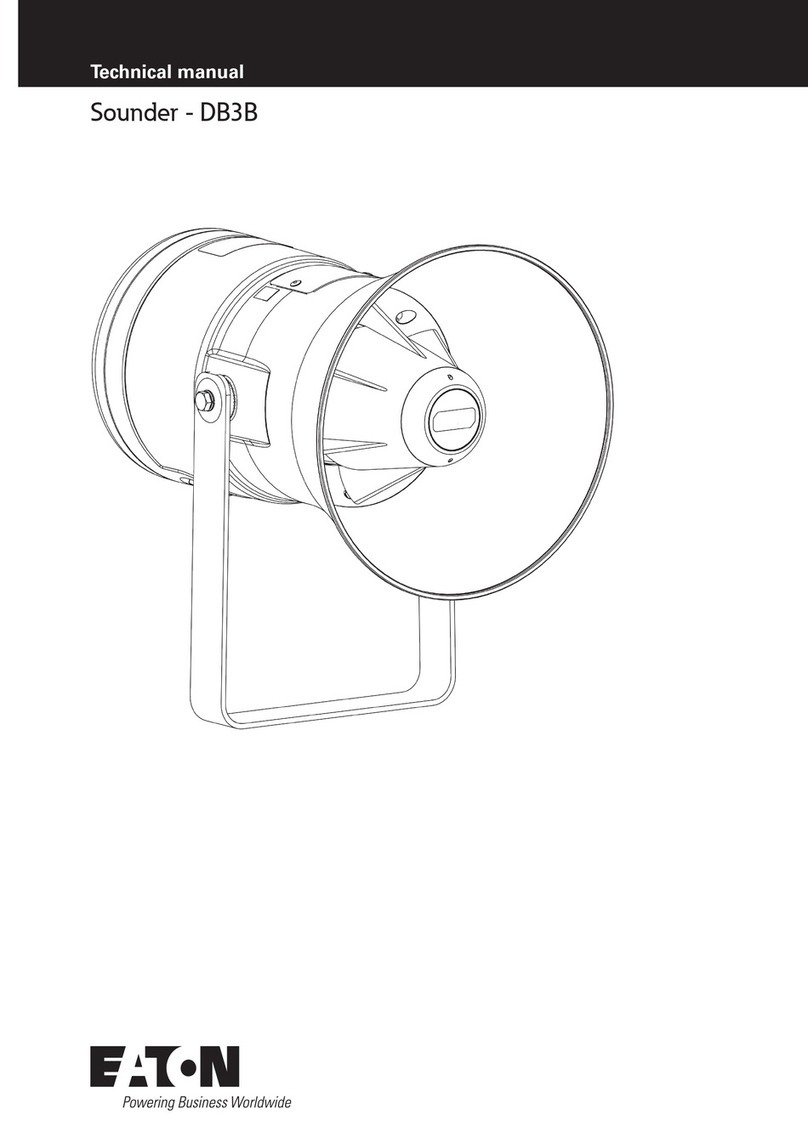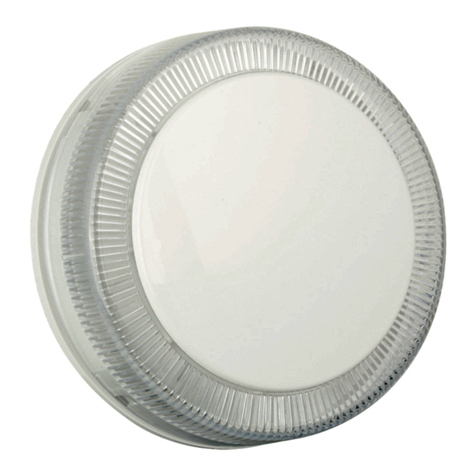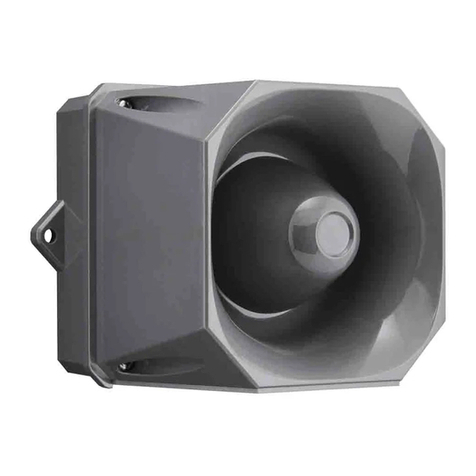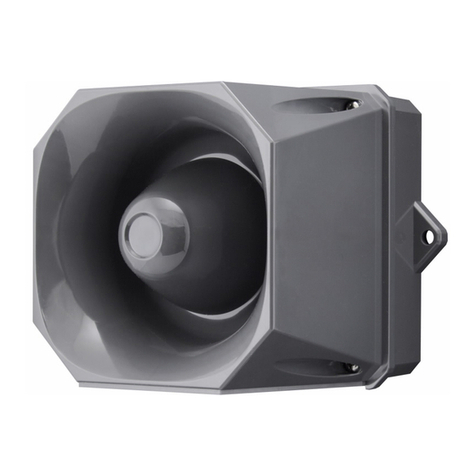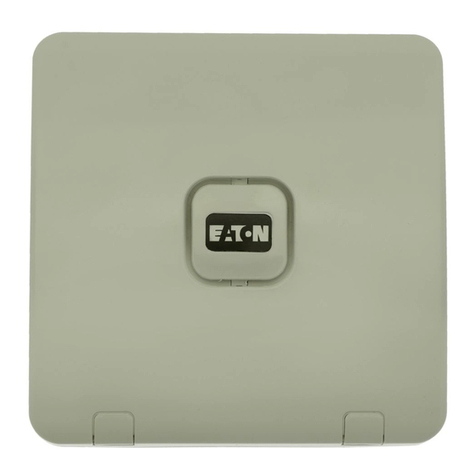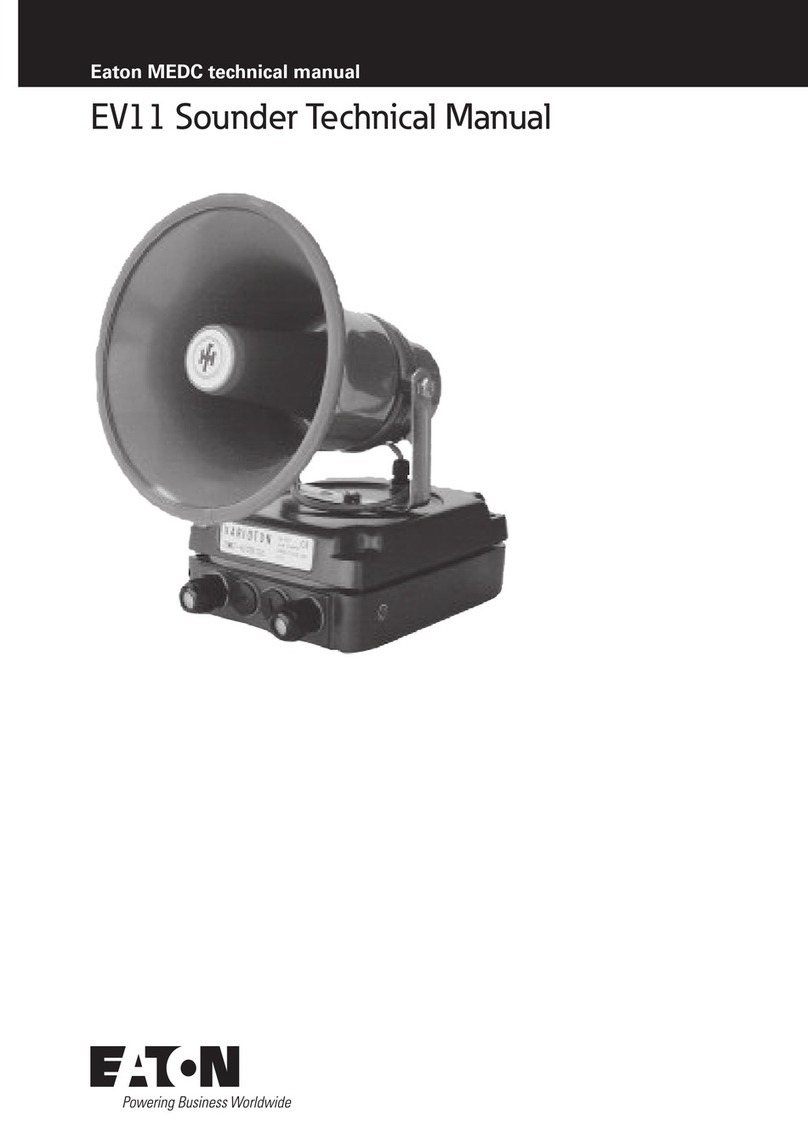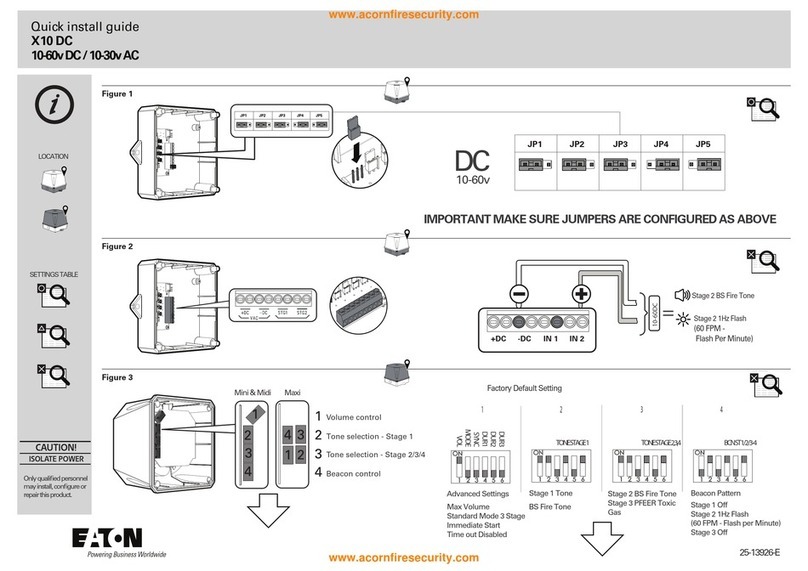
4
TM293 MEDC DB3BM UL Technical Manual
SOUNDER/HORN – DB3BM UL TM293.A August 2022 www.eaton.com
1.0 INTRODUCTION
This range of sounders, intended for use in potentially
explosive gas and dust atmospheres is manufactured
from either stainless steel or marine grade alloy with
a rugged thermoplastic flare.
Stainless steel mounting bracket, cover screws and
fixings are incorporated throughout thus ensuring a
corrosion free product. An ordinary locations version is
available for use in non-explosive atmospheres.
The units are suitable for Indoor and outdoor use and use
in wet environments
2.0 GENERAL SAFETY MESSAGES
AND WARNINGS
All instructions and safety messages in this manual must
be followed to allow safe installation of the device. The
device must only be installed and maintained by correctly
trained site personnel/installers.
• To reduce the risk of ignition of hazardous atmospheres
and shock, do not apply power to the device until
installation has been completed and the device is fully
sealed and secured.
• CAUTION – To reduce the risk of ignition of hazardous
atmospheres: disconnect from supply before opening.
Keep tightly closed when in operation.
• Warning – To reduce the risk of ignition of hazardous
atmospheres conduit openings must have a sealing
fitting connected within 50mm of the enclosure
• If employed for Division 2 applications, the installation
wiring and sealing method required to maintain the
specific type of protection shall be in accordance with
the relevant section of the NEC CEC i.e. For Class I
Division 2 locations the equipment shall either installed
as a Class I Division 1 Explosion proof product or Class
I Zone 1 Flameproof product. For Class II Division 2 or
Class III, the products shall be installed as a Zone 21
product based on protection from dust by enclosure
• Before removing the cover for installation or
maintenance, ensure that the power to the device
is isolated.
• Following installation, test the device to ensure
correct operation.
• Following installation ensure a copy of this manual is
made available to all operating personnel
• When installing the device, requirements for selection,
installation and operation should be referred to e.g. IEE
Wiring Regulations and the ‘National Electrical Code’
ANSI/NFPA70 in North America. Additional national and/
or local requirements may also apply e.g. CSA 22.1.
NFPA72 and ULC-S524
• Cable termination should be in accordance with the
specification applying to the required application.
MEDC recommends that all cables and cores should be
correctly identified. Please refer to the wiring diagram
in this manual (or separate diagram provided with the
unit).
• Ensure that only the correct listed or certified cable
glands are used and that the assembly is shrouded
and correctly earthed. Listed glands suitable for Class
I, Zone 1, Zone 21 with required NEMA ratings should
be used.
• Ensure that only the correct listed or certified stopping
plugs are used to blank off unused gland entry points
in accordance with EN/IEC60079-14 clauses 16.3, 16.4
& 16.5 (for Canadian Zones, refer to C22.1-15) and that
the outdoor wet rating of the unit is maintained.
• The internal grounding terminal shall be used for the
grounding connection and the external terminal, if
available, is for a supplementary bonding connection
where local codes or authorities permit or require such
a connection. The connection to the external earth
terminal shall be made by use of a UL 486E compliant
wire connection.
• When installing the device, MEDC recommends the
use of stainless steel fasteners. Ensure that all nuts,
bolts and fixings are secure.
• The unit should be positioned such that debris, dust or
water cannot settle in the re-entrant horn.
• The unit should be positioned such that any solid
object, not part of the equipment, is a minimum of
40mm from the Ex d flamepath joint.
• The front driver cover of the unit, situated underneath
the thermoplastic main flare, which encloses the
loudspeaker driver shall not be opened as it is not for
field installation or maintenance use
• Caution – Do not paint. Do not alter manufacturer
applied finishes.
• Potential Electrostatic Charging Hazard, protect from
direct airflow from exhaust ducts and the like that
may cause a charge transfer. If the unit requires
cleaning, only clean exterior with a damp cloth to avoid
electrostatic charge build-up. Ensure the equipment is
correctly earthed.
